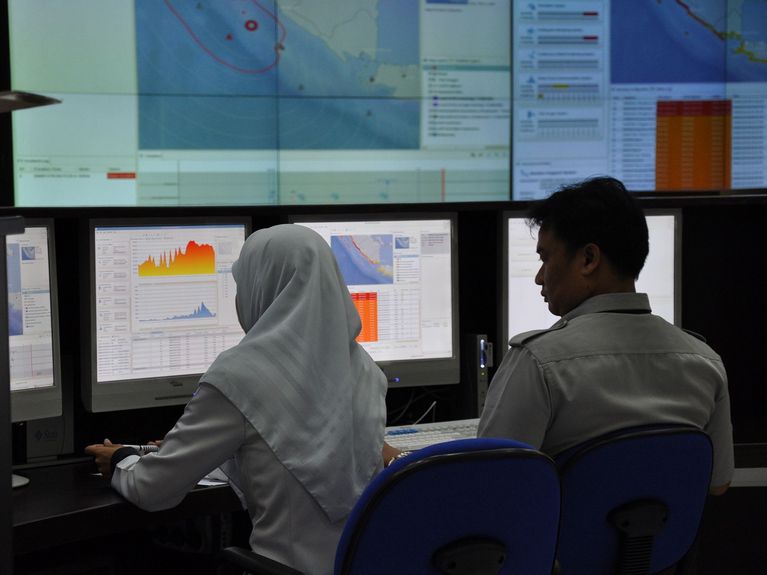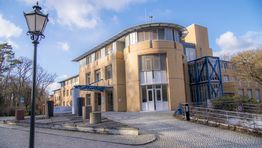
Story #21
Helping Brace for Disasters: The Tsunami Early Warning System GITEWS
After the devastating tsunami in 2004, the GFZ joined forces with other research centers to develop an early warning system for the Indian Ocean. Today, it is helping protect countless other coasts from these natural disasters. The monitoring of volcanoes and infrastructure has benefited as well.
The world was in a state of shock: due to a devastating earthquake and tsunami, a quarter of a million lives were lost in a single day. On Boxing Day 2004, a megaquake with a magnitude of 9.3 occurred off the coast of Sumatra, creating a 1,400-kilometer-long fault rupture in the ocean floor. This produced a tsunami that spread across the Indian Ocean to East Africa, catching many people living near the coast unprepared.
In the days following the disaster and still reeling from the event, experts from the GFZ Helmholtz Centre for Geosciences and colleagues from other institutions developed a concept for an early warning system to mitigate the impacts of such events in the future. At the time, Japan and the US were the only countries to operate early warning systems for the Pacific.
In January 2005, Germany’s federal government tasked a consortium of nine partners and coordinated by the GFZ with developing a German-Indonesian tsunami early warning system, dubbed GITEWS (German-Indonesian Tsunami Early Warning System). The pivotal scientific partners were the German Aerospace Center (DLR), Alfred Wegener Institute for Polar and Marine Research (AWI), GEOMAR Helmholtz Centre for Ocean Research in Kiel (formerly, the Leibniz Institute for Marine Research IfM-GEOMAR) and Helmholtz-Zentrum Hereon (formerly, GKSS Forschungszentrum Geesthacht). The Deutsche Gesellschaft für Internationale Zusammenarbeit (German Association for International Cooperation (GIZ)) also played an important part here.
At the heart of the system is a proprietary software package: SeisComP analyzes data from hundreds of seismic monitoring stations in the region and identifies those quakes that could set off tsunamis. Thanks to this software, together with tsunami simulations and a decision support system, the Early Warning Center in Jakarta can sound the alarm within minutes. GITEWS was launched in 2008 and handed over to Indonesia in 2011, where it has since been renamed InaTEWS (Indonesia Tsunami Early Warning System).
The tsunami early warning system has been used to analyze several thousand quakes and successfully issued warnings for more than a dozen. However, it has also failed to warn of some, or to warn of them in time, especially in cases where the waves hit the coast just minutes after the initial quake – before any warning could reach those at risk.
SeisComP, the software used for seismic monitoring, has been successfully refined since 2009 by a GFZ spinoff, the company gempa. The program has not only been integrated into various tsunami early warning systems developed around the globe in the interim but is also now used for the monitoring of volcanoes and critical infrastructures.
And at Helmholtz, tsunami research continues: the SAFAtor (SMART Cables And Fibre-optic Sensing Amphibious Demonstrator) project, which began in early 2025, uses underwater telecom cables as strain-measuring sensors and equips the cables with further sensors to monitor earthquake zones, volcanoes or oceans. The GFZ coordinates the project, working closely together with GEOMAR and other partners.
Bild: GITEWS
Participating centers
The GFZ Helmholtz Centre for Geosciences is Germany's national centre for research into the solid Earth. With more than 1,500 employees, the GFZ investigates the physical, geological, chemical and mineralogical properties of our planet.
